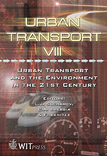GIS In Road Environmental Planning And Management
Price
Free (open access)
Transaction
Volume
60
Pages
10
Published
2002
Size
558 kb
Paper DOI
10.2495/UT020701
Copyright
WIT Press
Author(s)
E. Sfakianaki & M. O'Reilly
Abstract
The urban growth of the last few decades has resulted in increasing demands for infrastructure in urban sites. Access to and quality of road transport systems is often considered an index of industrial and social development. The construction of new roads may ease congestion and reduce travel time, but it is also a host of environmental impacts. It is increasingly recognised that it is necessary to develop and upgrade transport systems so that the physical, social and environmental impacts are minimised. The development of Environmental Impact Assessment (EIA) tools and methodologies is critical to ensuring that all potentially adverse impacts are identified and assessed, and are given consideration in the decision-making process. One tool that has considerable potential for supporting road EIA and ultimately planning is the Geographical Information System (GIS). The same tool is also employed to account for uncertainties in the EIA process. More specifically GIS is used to investigate how different traffic volumes will influence noise levels using a case study.
Keywords





